With a major art festival and the city’s largest art fair, September is the month to be in Copenhagen. We saw a ton of art and we noticed that at least half of the artists were American or non-Danes. Are there not that many Danish artists? Or do Danish collectors just need to get with the program? That being said, we brought back a surprising number of highlights and our travels hit on that one truism of gallery-going: you can find good and bad art no matter where you go.
Carlsberg Galleries
Down the street from Carlsberg headquarters and the brewery’s own, um, intriguing elephant bridge, several of the city’s contemporary galleries have set up shop inside a block of single-floor warehouses. Most of the work we saw in this district was by up-and-coming Danish artists. Totally recommended.
Endless Scroll, curated by Janus Høm and Martyn Reynolds
A. Kassen, Maiken Bent, Jan S. Hansen, Marie Kølbaek Iversen, Ferdinand Ahm Krag, Torben Ribe
IMO
September 1 – October 20, 2012
Corinna: Hands down, this was the most well-curated show I’ve seen in awhile. The exhibition itself is fairly sparse, with a few video monitors lackadaisically propped up against the wall, a painting here and there, and a few objects planted on the floor. As a whole, the exhibition looks more like an unfinished stage set. Maybe that plays into the curators’ idea of their practice as being like running “modelling agency,” a coarse, but tongue-in-cheek metaphor for saying that they’re actually the ones in charge and the artists are just there to put on a pretty face. At least that’s what I take it to mean.
My favorite works in this exhibition aren’t straightforward art objects; they’re things like Jan S. Hansens’s Sculptural Prop for Info-Screen, a green cloth draped over a metal stand. It just looks good, taking pride of place as the first thing you see when you walk inside the gallery. It’s a portal to another work: the cloth, well, it’s hooked up to a camera that feeds into a flat screen monitor behind the front desk that reads off the exhibition checklist. Included with the checklist is a piechart showing what percentage of the retail value of the work goes to the artists, curators, and dealers. I like that level of transparency, and the corporate presentation that goes along with it. Heck, I’m talking a lot, but I just like this exhibition. Blue ribbon.
Whitney: Yup. A refreshingly thoughtful work. I didn’t get the impression that the curators were saying the artists aren’t providing the substance. I just thought it meant that when image-selecting becomes a popular art and social practice, the distinction between curator and artist isn’t so rigid anymore.
There’s a rack of pamphlets in the back labelled “Modeling Agency,” with a photo of the curators crouching on a low platform against a sparse backdrop of photos. It’s not quite filled-up enough to be a showroom, and a little more antiseptic than a typical art piece. The pamphlet text describes how everyone who engages with social media filters the internet to “model a subjective expression of their relationship to society.”
That’s what I thought it aimed to show us in screens-within-screens, a poem for Julian Assange, and the inclusion of Introducing Male 3D Model Michael 5 for GenesisTM, a demo reel of “the most versatile, realistic, and anatomically accurate male human figure ever made available for public use” in the GenesisTM 3D Model Platform. The scrolling close-ups of skin, hair, poses, range of lifestyle options, all seem to suggest a more realistic reality makes a more perfect reality. There are many facetious versions of the “self-reflexive-infinite-lens” cliche, but this went deeper.
Corinna: That was one of my favorite works in the show, presenting that dream of digital, modifiable perfection. I need to post that video on YouTube for the rest of the world. [And then Whitney showed me it’s already on YouTube. I’m a loser.]
Three Galleries at Nicolai Wallner
Galleri Nicolai Wallner
August 31 – October 13, 2012
Showroom
Whitney: The showroom in the back isn’t a curated show, but we thought we should mention the work. It includes a bunch of New York regulars—Dave Shrigley, Jeppe Hein, and Elmgreen & Dragset. It’s not really curated, but a few works have to do with cutting up space. Alexander Tovborg’s Triptykon (Blue I) is a beautiful, planar cross-section of a house, next to Chris Johanson’s Co-exist in Exist, a collage stack of colored plastic bottles which melt into painted shard shapes. Jeppe Hein’s hanging oval mirror reflects those works, and he’s cut slits into mirror canvases. Even if it was random, I thought those worked off each other. It was okay.
Not as crazy about the ceramic Elmgreen & Dragset cooler in the back and their photos of classical statues of boys wearing a jock strap and a wife beater. Here they just felt like boutique items. Maybe curation could fix these, but if it has to come to that, they’re just not very compelling artworks.
Corinna: I just liked this random grouping of artists because it was more vibrant and punchy than the work in the other rooms. Not really a show, but it felt like one. And yeah, I’m kind of over the neo-Classical style that Elmgreen & Dragset is into, along with a lot of that VVORK-kind of stuff that’s come out since E & D started doing it.
Joachim Koester, Some Boarded Up Houses
Whitney: Joachim Koester has filled the second room with three sets of photos. The first, Occupied Plots, Abandoned Futures, depicts cheap roadside storefronts and empty lots in blue collar neighborhoods. The next shows deteriorating urban mansions, just a day beyond repair. The third show us exteriors and interiors of Alamut Castle, a ruin in Iran with upside-down captions from Time of the Hashashin, a 19th century story set in a hash club.
The captions describe scenes of moving between spaces and from dark to light, under photos of dual spaces: scaffolding around a slab of rock, or a ladder ascending into a dark upper-level, inside the cave-like castle.
That, and a photo of a crystal ball on the back wall made me think that this isn’t about houses at all, but crossing thresholds. I actually thought he captured an aura which unfolded really intuitively here, whereas all sensitivity gets buried in his concurrent solo exhibition at Kunsthal Charlottenborg.
Corinna: I didn’t love this when I walked in: I saw boarded up houses that screamed social-documentary meets Ed Ruscha. Borrring. It was Koester’s Time of the Hashashin series that warmed me up to his work, just because those photographs of the Alamut Castle had an air of magic and drama that his Occupied Plots, Abandoned Futures series lacked. I kept on thinking about Xanadu.
Jesper Just, This Nameless Spectacle
Whitney: Was not impressed with Jesper Just’s panoramic dual-projections. It opens with a woman in a wheelchair moving through outdoor spaces; as we see shots of her on the right-wall screen, we see what she sees on the left-wall screen.
This made for a handful of gratuitous shots. For some reason, she rolls through a cave with a waterfall in it, which looks pretty impressive on the big screen.
She reaches an apartment complex and is followed by a young guy, who we later find out lives a few stories up in the tower across from her. Once inside her own apartment, she gets up and walks to the window, where the boy (now shirtless) tilts his window to shine light in her eyes. She squints into it for a minute, then starts writhing on the floor. A long and intense staring exchange follows. He’s made a series of very specific events and blown them up on a huge scale; inevitably, whatever happens appears to carry really serious meaning. I didn’t see any.
Corinna: I agree that Jesper Just isn’t making meaningful work, but I think he’s good at creating compelling, mysterious vignettes. He wants to be Hitchcock, so maybe he’s taken up the wrong line of work. About that “writhing around” scene: I dug it. There’s a guy who shines a light into the eyes of his neighbor, which causes her, for no good reason at all, to tumble to the carpet, drooling in an epileptic fit. It’s pretty scary/sexy. As for Just’s reasons and motives for the physical installation of the work, yeah, there’s no reason why the work needs to be on such a large-scale, or two-channel, but that doesn’t bother me so much.
Alpha-Beta-Gamma
Sylvester Hegner, Jens Axel Beck, Peter Bonde, Morten Jacobsen, Lars Worm, Morten Buch, Matilde Duus, Mikkel Carl, Jytte Høy, Kristina S. Jakobsen, Christian Lemmerz, Naja Maria Lundstrøm
BKS Garage
September 1 – September 22, 2012
Corinna: This show was pretty hit-or-miss, but it showed work by emerging Danish artists, and prior to this weekend, I knew nothing about that territory. As for the hits, there was Fisse, a 19-second-long video by Naja Maria Lundstrøm that was just long enough to make a joke: a woman walks up to an older couple, asking the man if his girlfriend wants some pussy. He says “no.”
Lars Worm’s showed some simple canvases, marked by just a few lines of spray paint here and there, that border on interior design, but they were pleasant enough. And then I liked Jytte Høy’s Twist and Shout, a box containing wooden a model hand, the type you’d find at Blick, with its fingers contorted back-and-forth. It made me go “Ow.”
As for the misses, I’ll include Christian Lemmerz’s OTTO (P.M.), a bronze bicycle helmet pinned to the wall that looked exactly like a bicycle helmet, and Peter Bonde’s Fuck Younger Painters, a painting with a poster on it that says, unsurprisingly, “Fuck Younger Painters”. These two works were far too obvious. Guys, just learn some subtlety. Just a little bit. Even with my reservations, the misses weren’t too bad; none of these works would be out of place at one of New York’s independent art fairs.
Whitney: Apparently this is a venue mostly for student work, so it may explain the loose premise. It did feel pretty art fair-y, which I don’t think makes for much of an art experience. It was nice to see a bunch of Danish artists, though.
_____
Matthew Ronay, It Comes in Waves
Nils Staerk
September 1 – October 20, 2012
Corinna: This artist’s work looked totally familiar to me. No surprise, I asked the gallerist about him, and he’s based in Brooklyn and shows at Casey Kaplan. Out of the four Carlsberg galleries we visited, this was the only artist we saw from our neck of the woods. He’s really talented at paying attention to detail: all of his surreal sculptures have been carved with an immense amount of decoration and ornamentation. There’s one sculpture that looks like a human-sized lamp outfitted with wooden mushrooms and oversized, dangling dicks. For as many dicks and “anal beads” in this show, it’s not a sexy show. I guess that has something to do with how there’s also a lot of death in this show, too, with some of his sculptures looking like mummified corpses.
Whitney: It’s installed in a yoga studio set-up with rows of funky pods, altars, and a wiry menora, like something out of Beetlejuice. Weirdly in keeping with that film, there’s a Circle of Life theme, with the mummy-pods (which appear to be smoking long pipes) and p&v shapes throughout. The result isn’t exactly a commandment, just a quiet reminder about fucking and dying. Which we get a lot.
Meatpacking District Galleries
We were told many of Copenhagen’s contemporary galleries were located in a strip mall. This was it.
Eva Schlegel, In Between
Janaina Tschäpe, Shaping Fluid
Galleri Bo Bjerggaard
August 24 – October 20, 2012
Corinna: I have nothing good to say about these two shows, which featured some monochromatic figurative work by Janaina Tschäpe and then, most notably, a huge propeller with text projected on it. There’s a big sign that says to stay away from the propeller or your head might get chopped off. If only that had been part of the installation…
Whitney: What about the Jonathan Meese bathroom, with a neon-splashed mirror across from the toilet? There’s a video of Meese sitting on a toilet, singing “Me-ta-bo-is-mus” (metabolism) over and over in a high-pitched voice, pinching a block of white clay, and then throwing it in the bowl. You see yourself sitting on the toilet, too, and you kind of complete the work with your own metabolismus. Weee!!! It’s a level of engagement that I truly wish art would offer more.
I know it seemed cheesy, but I liked that propeller. A series of spiralling quotes from astronauts are projected onto it, about what it’s like to fully realize that you’re in space. They describe being disconnected from any frame of reference, time, history, or place. I think it’s worthwhile to really think about what that means occasionally.
Janaina Tschäpe seemed to be getting at something similar with balloons floating in water and a video of a giant white beach ball drifting on shallow waves. This just didn’t carry as much impact (even if there hadn’t been a giant propeller in the other room).
Corinna: How could I forget the Meese bathroom? And the attention to detail in the cluttered bathroom! Like the gallerist told us, Meese adds something new to his installation each time. I bet there’s some long lines for the bathroom during openings.
_____
Thomas Campbell, Clastic Plowers
Ed Templeton, Litmus Test
Evan Hecox, Known Associates
V1
August 31 – September 29, 2012
Whitney: It may not look like much, but I really enjoyed reading Ed Templeton’s handwritten captions around his photos. I liked the combinations of first impressions (photos of people on the street) with captions we’ve heard before. Some of them contradict, like above and beneath a photo of an old woman begging for change:
“As a small businessperson, you have no greater leverage than the truth.”–John Greenleaf
and
“The surest way to remain poor is to be an honest man.” — Napoleon Bonaparte.
Others took on a funny inner dialogue, like a bathroom stall conversation:
“Woman was God’s second mistake.”– Friedrich Nietzsche
followed by
“Nietzsche was stupid and abnormal.”– Leo Tolstoy
Corinna: Meh. It was pretty much a skater art show, which is not something I’m really into. Sorry, but I’ll pass.
Whitney: Any kind of art can be good, sometimes.
Corinna: Yep, but not this time around.


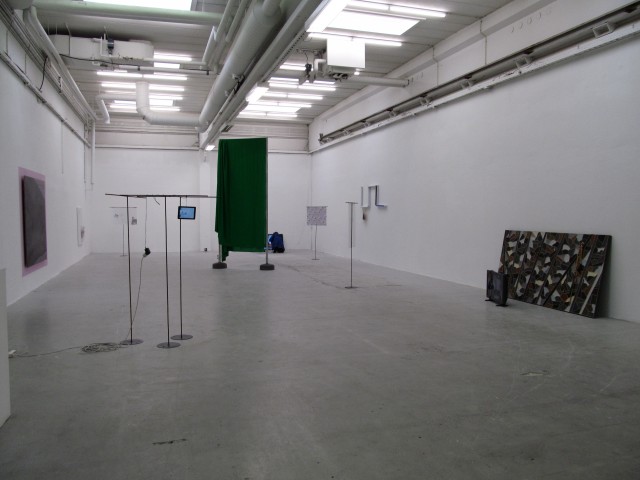
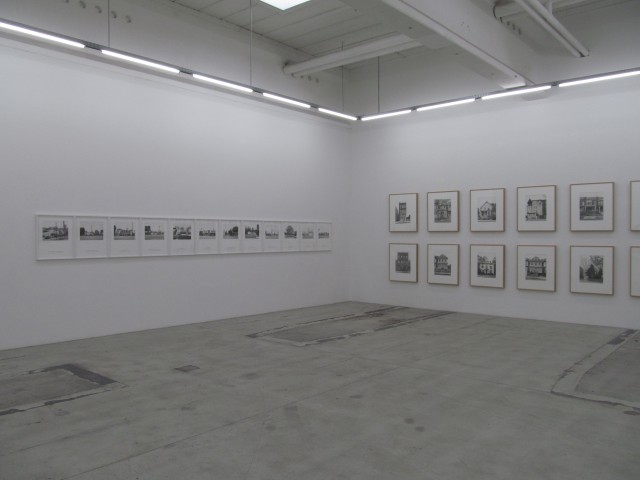
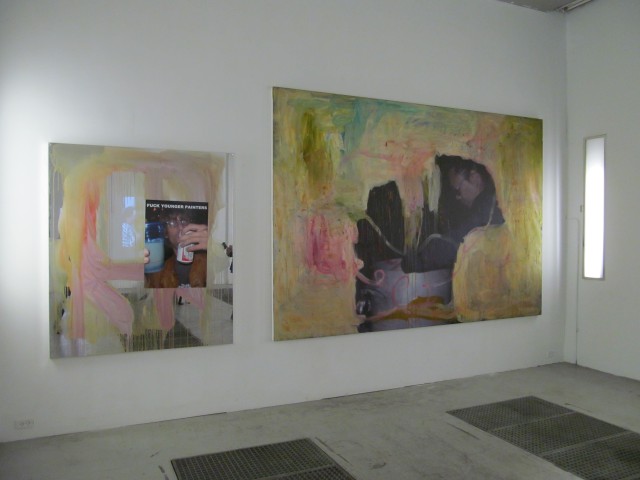
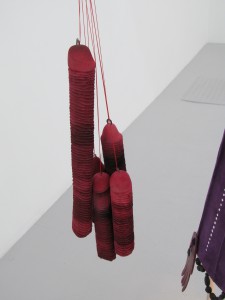
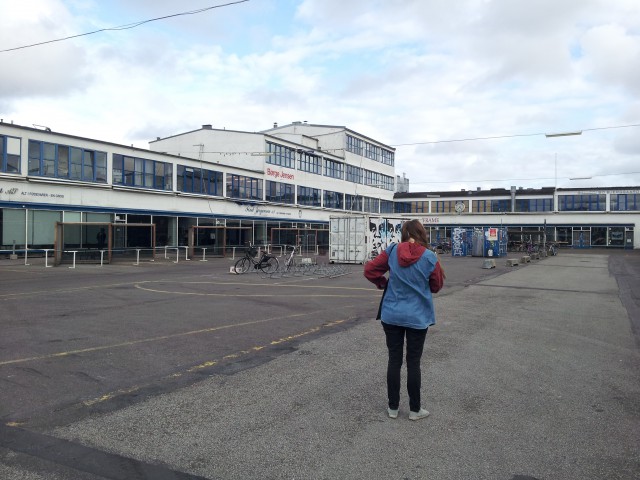

Comments on this entry are closed.